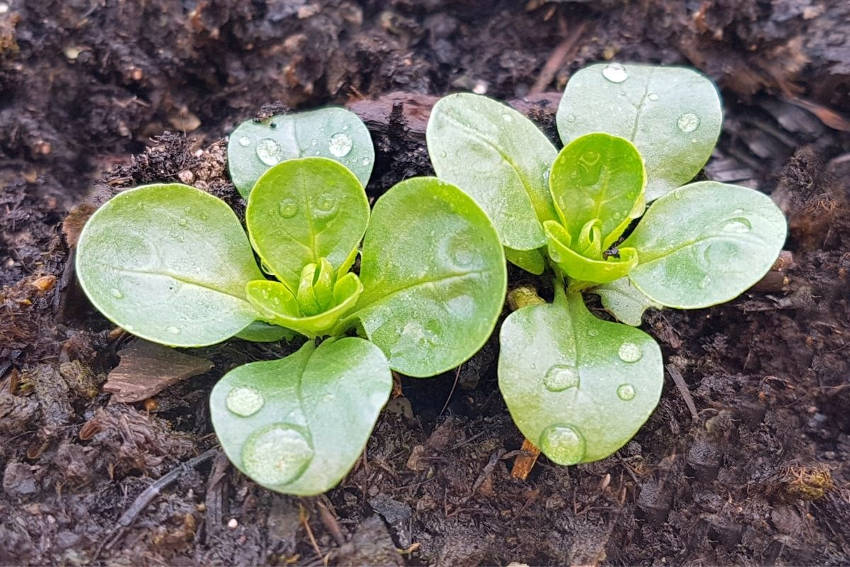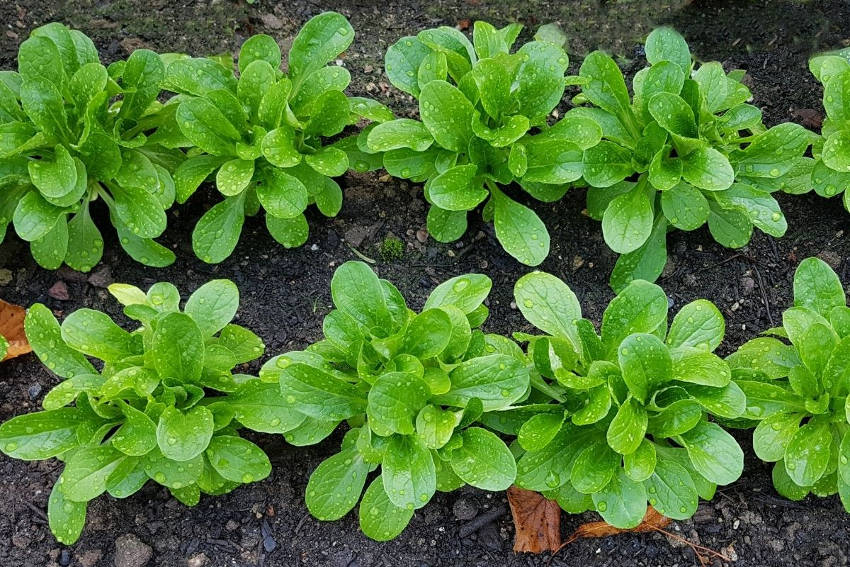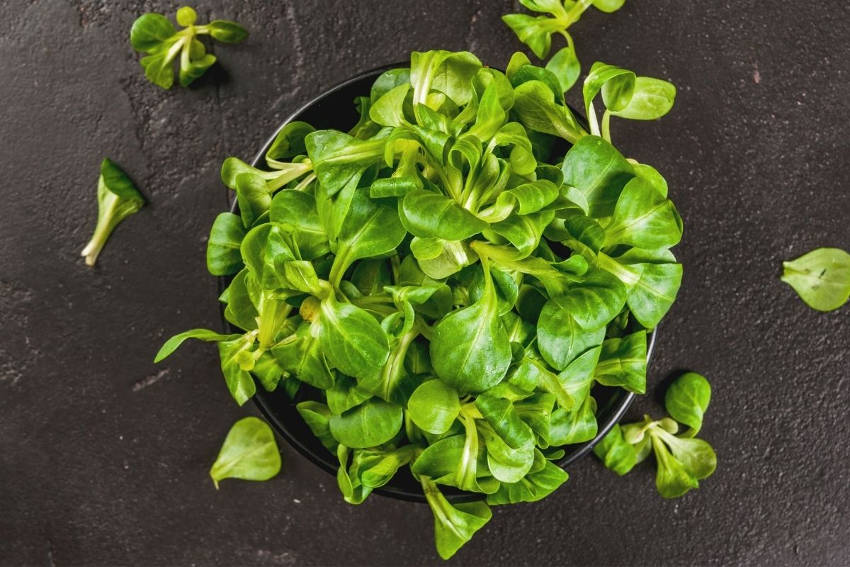Corn salad is a cool-season green vegetable that's usually grown as a tender salad leaf. It takes its common name from its tendency to thrive as a weed in corn or cereal fields. This eagerness to grow might suggest that corn salad is one of the more straightforward leaves to cultivate at home, and happily, that suggestion would be right.
Known botanically as Valerianella locusta, corn salad was originally native to France but is now established globally, where it goes under several names including lamb's lettuce, mache, and feldsalat.
Corn salad is distinctive for its very low, dropping habit, with the plants nestling close to the soil. The plant has a delicate white stem, with six to eight rounded dark green leaves branching out in a loose head. In commercial salad packs, the leaves are generally picked fairly small for tenderness, but left to grow they can reach 15cm in length before the plant matures to produce flowers and seeds.
Corn Salad in the Kitchen
Corn salad is most often used as a tender young green, served raw in salads. It has a mild nutty taste with an iron edge, and a juicy texture that makes it a great mixer for more strident or fibrous leaves.
But as the leaves get larger, they can be treated much like spinach, making an interesting side dish when steamed, wilted, or sauteed. And while most people find growing corn salad specifically for cooking isn't worth the effort, it can be a useful way of using up older, tougher leaves that have been lingering in your patch a week or two too long.
Corn Salad's Nutritional Value
Corn salad doesn't seem to have a particularly strong history of medicinal use. But as a dark leafy green, it's packed with nutrients and makes a healthy addition to any plate. It's low in calories and low in fat, rich in vitamins A and C, and provides useful amounts of vitamins B6, B2, and B1.
And lastly, corn salad is also a good source of several minerals, particularly iron, potassium, and calcium.
Growing Corn Salad
Corn salad needs a well-draining soil in a sunny location, although some shade from strong afternoon sun will be useful. As a cool season plant, it needs a temperature of between 10°C and 20°C to germinate, with failure happening outside this range either way.
Similarly, the adult plant will bolt quickly to seed in high temperatures, so sow in late autumn or early spring when the weather will be reliably cool for the plant's entire life of around two to three months. Most varieties of corn salad are fully frost hardy, so err on the side of coolness rather than warmth when deciding when exactly to sow.
The seed can be scattered relatively lightly, with the plants later thinned to 15cm in each direction. More formally, sow in drills 15cm apart with a row spacing of 30-45cm. Unlike lettuce which is sown on the surface, corn salad germinates best when lightly covered with 0.25-0.5cm of soil.
Water well immediately after sowing, and continue with moderate watering for the plant's full life. Germination takes around one to two weeks but sometimes up to a month depending on temperature, so with corn salad, patience is often a virtue.
Harvesting Corn Salad
Corn salad will generally be ready for harvesting 40-70 days after germination. It's not a plant that can be kept in the ground long, as it's quick to bolt to seed, after which the leaves will turn tough, stringy, and bitter.
Corn salad's low-growing habit and tender, juicy texture makes the leaves difficult to harvest on a commercial scale, which is one of the reasons the final product is often priced at the higher end of the range. However, harvesting at home is much simpler when you only need to pick enough for the next meal or two.
The most common way of harvesting is to slice off a whole plant by the stem once it has produced six to eight leaves. Corn salad can also be treated as a 'cut and come again' crop by taking a few outer leaves from each plant, although the short growing season means the advantages of doing this are slight.
Common Corn Salad Problems
As with any tender green, corn salad can suffer from the attention of slugs and snails. Luckily, the cooler conditions needed for growing can be helpful, naturally keeping the pest's activity levels low.
Similarly, aphids can be an issue in the right conditions, but the peak corn salad and aphid seasons don't usually coincide. For both pests, keep an eye open for early signs of a problem, and take your usual protective action if needed.
One particular pest to be alert for is the cutworm. These are the caterpillars of several species of moths, and feed overnight on your plants at ground level. This usually results in the plants toppling over as if sliced through at the base, a strong sign that cutworms are the cause.
Chemical treatments are available for an infestation, although the most effective prevention is to keep your veggie patch free of weeds in the weeks before sowing any new crop, reducing the chances of eggs being laid.
But those three problems aside, corn salad is straightforward and easy to grow. If you have a spare piece of soil available outside the usual growing season, sprinkle a few seeds and you can squeeze an extra crop out of your patch while the rest of the garden is taking its winter break.








